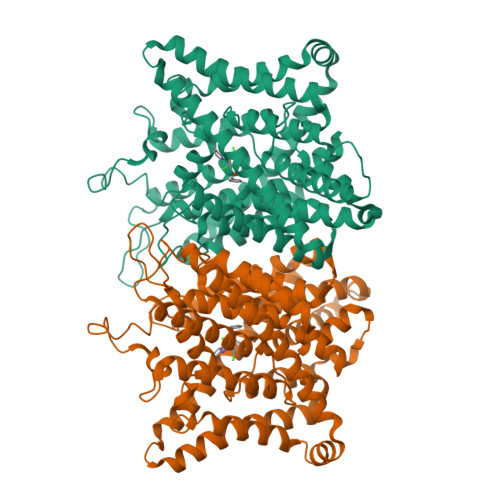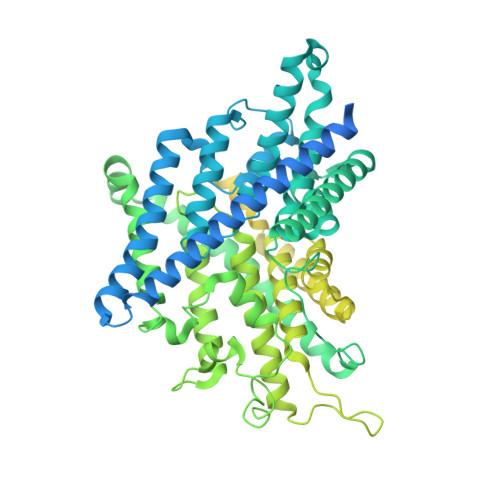Cryo-EM structures of ClC-2 chloride channel reveal the blocking mechanism of its specific inhibitor AK-42.
Ma, T., Wang, L., Chai, A., Liu, C., Cui, W., Yuan, S., Wing Ngor Au, S., Sun, L., Zhang, X., Zhang, Z., Lu, J., Gao, Y., Wang, P., Li, Z., Liang, Y., Vogel, H., Wang, Y.T., Wang, D., Yan, K., Zhang, H.(2023) Nat Commun 14: 3424-3424
- PubMed: 37296152
- DOI: https://doi.org/10.1038/s41467-023-39218-6
- Primary Citation of Related Structures:
8GQU - PubMed Abstract:
ClC-2 transports chloride ions across plasma membranes and plays critical roles in cellular homeostasis. Its dysfunction is involved in diseases including leukodystrophy and primary aldosteronism. AK-42 was recently reported as a specific inhibitor of ClC-2. However, experimental structures are still missing to decipher its inhibition mechanism. Here, we present cryo-EM structures of apo ClC-2 and its complex with AK-42, both at 3.5 Å resolution. Residues S162, E205 and Y553 are involved in chloride binding and contribute to the ion selectivity. The side-chain of the gating glutamate E205 occupies the putative central chloride-binding site, indicating that our structure represents a closed state. Structural analysis, molecular dynamics and electrophysiological recordings identify key residues to interact with AK-42. Several AK-42 interacting residues are present in ClC-2 but not in other ClCs, providing a possible explanation for AK-42 specificity. Taken together, our results experimentally reveal the potential inhibition mechanism of ClC-2 inhibitor AK-42.
Organizational Affiliation:
Shenzhen Institute of Advanced Technology, Chinese Academy of Sciences, 518055, Shenzhen, China.



















